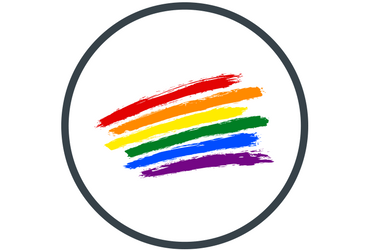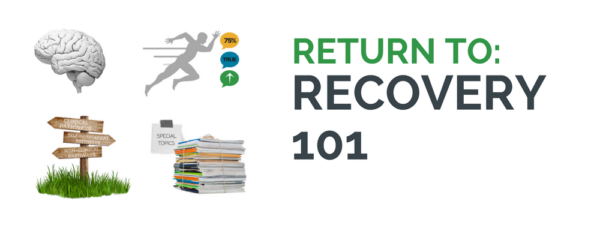
LGBTQ+ & Recovery
LGBTQ+ stands for Lesbian, Gay, Bisexual, Transgender, Queer, or Other.
It is estimated that 30% of LGBTQ+ individuals suffer from some form of addiction, compared to 9% in the general population.
Roughly 4% of Americans identify as lesbian, gay, bisexual, or other (LGB+), and are statistically at higher risk for substance use disorder development than those who identify as heterosexual. Gay, lesbian, and bisexual individuals are roughly 18% more likely to have alcohol addiction, 20% more likely to have drug use disorder, and 5.9% more likely to misuse prescription medications.
Despite recent advances, sexual minorities are a historically underrepresented group both socially and politically, and continue to face significant stigma and discrimination. Multiple subgroups exist within the LGBTQ+ community, and each group holds its own individual sensitivities and unique needs that may need to be addressed in order to achieve long-term recovery.
According to the new National Recovery Study data, approximately 12% of the 22.35 million Americans who have resolved a significant problem with alcohol or other drugs identify as LGB+.
LGBTQ-SPECIFIC SENSITIVITIES:
- CO-OCCURRING DISORDERS
-
Sexual minorities with substance use disorder are more likely to have a co-occuring psychiatric disorder. Depression, self-harm, suicidal thoughts, low self-esteem and anxiety are all pronounced conditions in LGBTQ+ patients.
Gay, Lesbian, and bisexual men and women are at higher risk for mental distress and depression than their heterosexual counterparts.
Transgender youth have higher levels of depression, suicidality, self-harm, and eating disorders than their non-transgender counterparts.
Co-occuring disorders need to be addressed, as risk of fatal opioid overdose is 3x higher for those diagnosed with depression, and 6x higher for those with serious mental illness.
- STIGMA & DISCRIMINATION
-
Discrimination in the U.S. against members of the LGBTQ+ community, is often seen in the fear of, dislike of, or prejudice against non-heterosexual individuals. Discrimination can take the form of:
- Exclusionary government policy
- Social rejection in family or friends, peer victimization and isolation
- Hate crimes, harassment, or interpersonal violence
- Barriers in access to high quality healthcare, housing, and employment (in 28 states, being LGB is grounds for employment termination, and in 30 states being transgender is grounds for employment termination).
Substance use disorder is one of the most stigmatized health conditions in the world, furthermore, this stigma can be further amplified or compounded from or with additional stigma related to one’s sexual orientation.
- HEALTHCARE INEQUALITIES
-
87% of individuals that identify as gay, lesbian, or bisexual have health insurance (12.7% uninsured rate in 2019), compared to a coverage rate of 88.6% in individuals that identify as straight or heterosexual (11.4% uninsured rate in 2019). For transgender individuals, this percentage decreases to a 81% coverage rate (19% uninsiured rate in 2019).
LGBTQ+ individuals may be more likely to receive poor quality care due to stigma, lack of healthcare providers’ awareness and training, and insensitivity to the unique needs of the individual.
LGBTQ+ individuals may find it difficult to disclose their sexual identities to healthcare clinicians, which can inhibit the formation of a strong therapeutic alliance between patient and provider. Furthermore, LGBTQ+ populations are more vulnerable to certain diseases, but are inadequately scheduled for tests related to these diseases.
- SEXUALLY TRANSMITTED INFECTIONS
-
LGBTQ+ individuals are at a higher risk for sexually transmitted disease and infection.
A much higher proportion of gay and bisexual men are living with HIV compared to any other group in the U.S.. According to the Center for Disease Control and Prevention (CDC), roughly 67% of HIV infection diagnoses were transmitted by male to male sexual contact, and 1 in 6 gay and bisexual men living with HIV are unaware that they have it.
Sexually transmitted infections (STI’s) such as gonorrhea, chlamydia, and syphilis have increased rates among gay and bisexual men and women, especially those who report both male and female sex partners.
Notably however, recent research has suggested that STI disparities may be better explained through individual sexual behavior, then sexual identity alone.
- HOMELESSNESS
-
An estimated 20-40% of the 1.6 million youth that run away from home are LGBTQ+. Being homeless places youth in high-risk environments for alcohol and other drug use.
SUPPORTIVE MEASURES FOR LGBTQ+ IN TREATMENT
It is important to keep in mind that there are multiple pathways to recovery and that each individual with substance use disorder manages differently. Treatment programs should address the specialized needs of members of the LGBTQ+ community for a more well-rounded and inclusive path to recovery. This would include clinician sensitivity to the additional stigma/discrimination that such individuals may face in addition to their substance use disorder and creating a truly person-centered approach to addressing their needs more effectively. More studies are needed that examine LGBTQ+ identity as a factor that might exacerbate relapse risk and to understand the mechanisms by which this may occur.
- SUPPORTIVE THERAPIES
-
Research supports that addiction treatment programs that address common sensitivities to the LGBTQ+ community such as homophobia, family problems, violence, and social isolation can be especially effective for LGBTQ+ individuals.
The incorporation of empowerment, social support therapy, contingency management, motivational interviewing, and cognitive-behavioral therapy in addiction treatment is found to be effective in achieving positive recovery outcomes in the LGBTQ+ population.
- FAMILY THERAPIES
-
A 2009 study comparing gay, lesbian, and bisexual young adults who experienced strong rejection from their families with peers who had more supportive families found that those who experienced stronger rejection were:
- 8x more likely to have tried to commit suicide
- 6x more likely to report high levels of depression
- 3x more likely to use illegal drugs
- 3x more likely to have risky sex
According SAMHSA, providing support for both LGBTQ+ patients and their families is a significant component necessary to substance use treatment.
- LGBTQ+ SPECIFIC
-
Due to the high number of LGTBQ+ individuals who have faced physical or verbal abuse for their sexual orientation, specific sexual minority options for housing and peer support groups, may help facilitate a safe environment for the patient to focus on addiction treatment and recovery.
Additional sensitivity around preferences for gender of the patient care team or provider, and awareness around gendered spaces (e.g. creating gender-neutral bathrooms), can facilitate a sense of security and acceptance.
- HEALTHCARE
-
Healthcare for LGBTQ+ addiction treatment patients needs to comprehensively address co-occurring mental and physical conditions, taking note of the increased risk for sexually transmitted infections, sexually transmitted diseases such as HIV, and other mental health disorders in this population.
RESEARCH NOTE
The study of addiction medicine and sexual minorities has faced challenges in issues of disclose (percentage of individuals who have, or have not “come out”) and in variance of vernacular, acronyms, and meaning assigned to describe the different LGBTQ+ subgroups. More research on addiction and this important subgroup is needed.
RESOURCES FOR LGBTQ+
- The Trevor Project: Crisis intervention and suicide prevention
- GLAAD: Leading the conversation of LGBTQ+ protection
- Advocates for Youth
- Homelessness Resource Center: help prevent the pipeline from homelessness to substance use disorder
CITATIONS
- Research Citations
-
- Benson, P. A., & Hergenroeder, A. C. (2005, July). Bacterial sexually transmitted infections in gay, lesbian, and bisexual adolescents: medical and public health perspectives. Seminars in pediatric infectious diseases (Vol. 16, No. 3, pp. 181-191). WB Saunders.
- Bouris A, Guilamo-Ramos, Pickard A, Shiu C, Loosier PS, Dittus P, Gloppen K, Walmiller JM. A systematic review of parental influences on the health and well-being of lesbian, gay, and bisexual youth: Time for a new public health research and practice agenda. Journal of Primary Prevention 2010; 31:273-309.
- Connolly, M. D., Zervos, M. J., Barone, C. J., Johnson, C. C., & Joseph, C. L. (2016). The mental health of transgender youth: advances in understanding. Journal of Adolescent Health, 59(5), 489-495.
- Everett, B. G. (2013). Sexual Orientation Disparities in Sexually Transmitted Infections: Examining the Intersection Between Sexual Identity and Sexual Behavior. Archives of Sexual Behavior, 42(2), 225–236. http://doi.org/10.1007/s10508-012-9902-1
- Green, K. E., & Feinstein, B. A. (2012). Substance use in lesbian, gay, and bisexual populations: An update on empirical research and implications for treatment. Psychology of Addictive Behaviors, 26(2),
- Hafeez, H., Zeshan, M., Tahir, M. A., Jahan, N., & Naveed, S. (2017). Health care disparities among lesbian, gay, bisexual, and transgender youth: a literature review. Cureus, 9(4).
- RESEARCH SUMMARY: Recovery Research Institute: 1 in 10 Americans Report Having Resolved A Significant Substance Use Problem from Kelly, J. F., Bergman, B. G., Hoeppner, B. B., Vilsaint, C. L., & White, W. L. (2017). Prevalence and pathways of recovery from drug and alcohol problems in the United States population: Implications for practice, research, and policy. Drug and Alcohol Dependence, 181(Supplement C), 162-169. doi: https://doi.org/10.1016/j.drugalcdep.2017.09.028
- Additional Citations
-
- Hazelden Betty Ford: LGBTQ Substance Abuse
- National Institute on Drug Abuse: Substance Use and SUDs in LGBT Populations
- SAMHSA: Lesbian, Gay, Bisexual, and Transgender
- The National Center on Addiction and Substance Abuse: Why Does the LGBT Community Face Higher Risk for Substance Abuse and Addiction
- NAADAC: The Association for Addiction Professionals- Process Addictions and the LGBT Community
- LGBT Addiction Is Not the Same As Straight Addiction
- Addiction Risk Factors in the LGBT Community
- Why the Gay and Transgender Population Experience Higher Rates of Substance Use
- Discrimination in America: Experiences and Views of LGBTQ Americans
- American Psychological Association: The Minority Stress Perspective
- Center for Disease Control and Prevention: HIV/AIDS
- Out & Equal Workplace Advocates: 2017 Workplace Equality Fact Sheet
- Gov: LGBT
- SAMHSA: A Provider’s Introduction to Substance Abuse Treatment for Lesbian, Gay, Bisexual, and Transgender Individuals
- SAMHSA: Sexual Orientation and Estimates of Adult Substance Use and Mental Health- Results from the 2015 National Survey on Drug Use and Health


